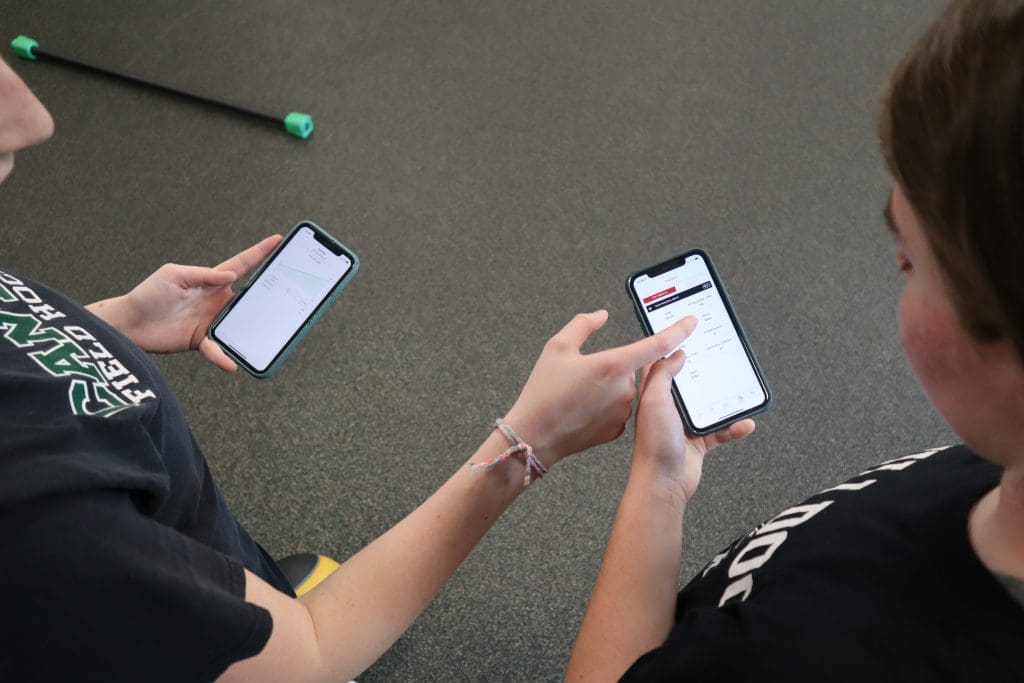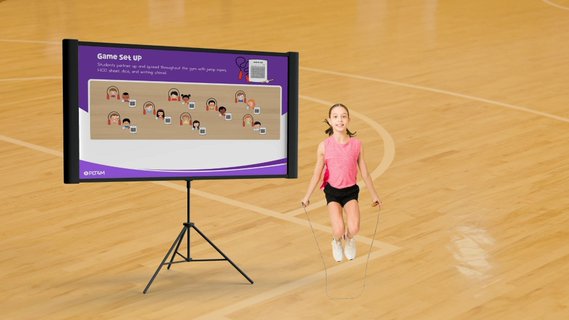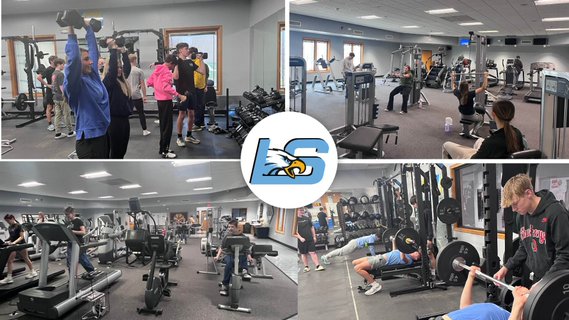This article explores all things tracking student progress in physical education. First, we discuss the benefits aka the why. Next, we break down the what, when, and how of tracking student progress in physical education. In addition, we provide examples and strategies that can be applied to your classroom setting.
Benefits of Tracking Student Progress – The Why
Tracking student progress benefits students, teachers, administrators, and families. The benefits of tracking student progress include:
Personalized Learning: Students have unique strengths, weaknesses, and learning styles. By tracking their progress, teachers can identify individual student learning needs and tailor their teaching methods to suit each student better. This personalized approach helps students grasp concepts more effectively and boosts their overall performance.
Identifying Learning Gaps: Tracking progress allows educators to identify learning gaps or areas where students are struggling. Once these gaps are identified, teachers can intervene promptly with additional support, extra help, or differentiated learning strategies to ensure a student’s progress.
Measuring Learning Outcomes: Student progress tracking enables the assessment of learning outcomes and whether educational goals are being met. It helps teachers and educational institutions evaluate the effectiveness of their curriculum and teaching methods.
Feedback and Motivation: Regular feedback on their progress can motivate students to continue working hard and improve their performance. Positive reinforcement for their achievements and constructive feedback on areas of improvement can boost students’ confidence and motivation.
Goal Setting and Achievement: Regularly tracking students’ progress helps them set achievable goals and work towards accomplishing them. It instills a sense of responsibility and ownership in learning.
Accountability and Transparency: Tracking student progress promotes transparency and accountability in the classroom. Administrators, parents, guardians, and stakeholders can gain insights into student achievement for individual students and entire class groups.
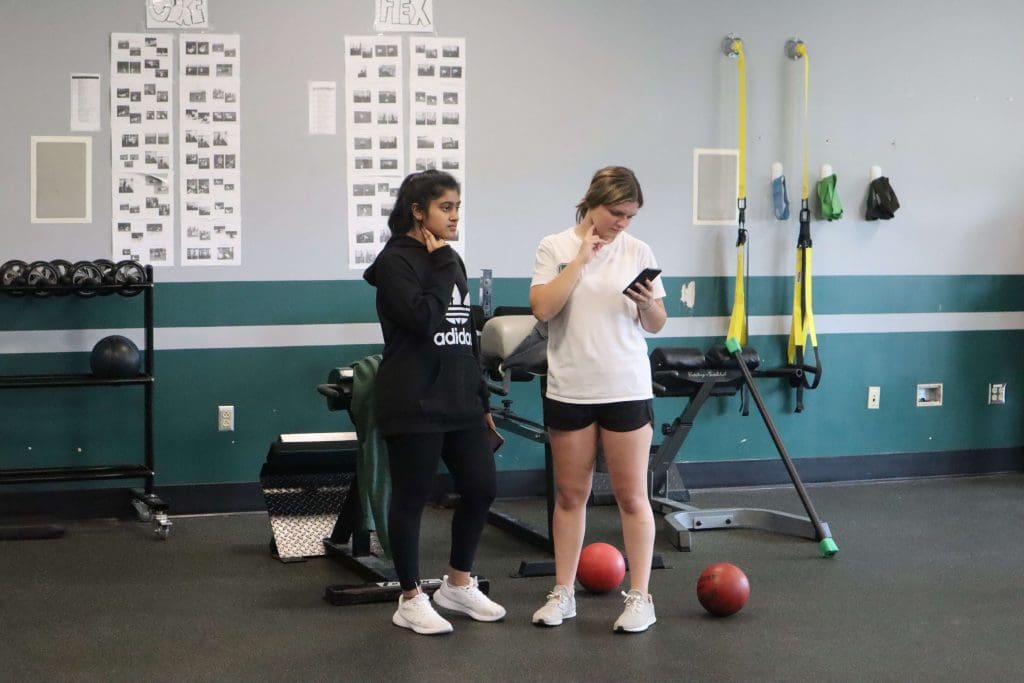
What, When, and How of Tracking Student Progress in Physical Education
With the whole host of benefits for tracking student progress, physical education teachers must consider the what, when, and how of student progress monitoring. There are many different ways that physical education can collect and contextualize student data, but below is a detailed playbook for how schools can go about tracking student progress with PLT4M.
Step 1: What Student Data Do You Want
Physical education teachers can utilize grade level shape standards and state standards to help guide the types of instruction, lesson plans, and assessments for their classroom. As a result, they can then decide what metrics they want to use to track student growth.
Here are PLT4M; we often start with a slate of baseline fitness testing that covers various fitness domains. These baseline fitness tests are appropriate for relatively novice and new students.
Quick Note: We will expand on the when and how section, but please note that with PLT4M you can track student’s progress in any metric. So, while you might not see some of your favorite fitness assessments below, know that you can easily customize what you measure with PLT4M’s student tracking system.
Baseline Fitness Testing Examples:
Aerobic Capacity – 1 Mile Run – Our 1 mile run test is meant to be an assessment of your “aerobic” capacity. Otherwise known as ‘stamina’ or ‘endurance’, aerobic capacity simply refers to your ability to work continuously at moderate to low effort for extended periods of time without fatiguing or needing to stop.
Anaerobic Capacity – 2 Minute Max Burpees – Our 2 minute burpee test is meant to be an assessment of your anaerobic capacity. Essentially, when short, intense bouts of activity are required, your body cannot rely on oxygen as a source of energy creation. It takes too long, and cannot keep up with the high demand. That’s when the anaerobic energy systems kick in.
Strength – 1 Minute Push Up Test, 1 Minute Squat Air Squat Test, Max Pull-Ups – All these tests seek to test relative muscular strength and endurance of the body. Standard push up and pull up tests have been used for decades as components of a basic fitness assessment. They aim to record and track an individual’s relative upper body strength. The air squat test is a form of testing an individual’s relative lower body strength.
Mobility – Squat Therapy Test – For years, fitness tests included an element of passive muscular flexibility assessment. The sit and reach test is a prime example of what we are referring to. Nowadays, we care about your overall ‘mobility’ rather than just your passive muscular flexibility.
Total Fitness – Metcon Test – Our final fitness test is a “MetCon” (Metabolic Conditioning) workout that assesses your ability to perform a number of different movements consistently and continually. It is a blend of aerobic and anaerobic capacity, strength, and mobility.
Below is a sample video from the PLT4M resource library outlining the metcon test.
Advanced Fitness & Training Metrics
Beyond the baseline fitness testing, PLT4M also incorporates more advanced student data tracking. Many of these are for experienced students participating in strength and conditioning. With our more advanced programs, teachers and coaches can go about tracking student progress in things like:
Strength
Continual Tracking of…
Squat Working Max
Press Working Max
Clean Working Max
1RM Assessment of…
Bench Press
Strict Press
Back Squat
Front Squat
Hang Power Clean
Power Clean
Deadlift
Fitness/Performance
Vertical Jump (Power)
Pull Up (Strength)
Push/Squat (Strength Capacity)
Jump Rope (Skill)
Plank Hold ((Stability/Stamina)
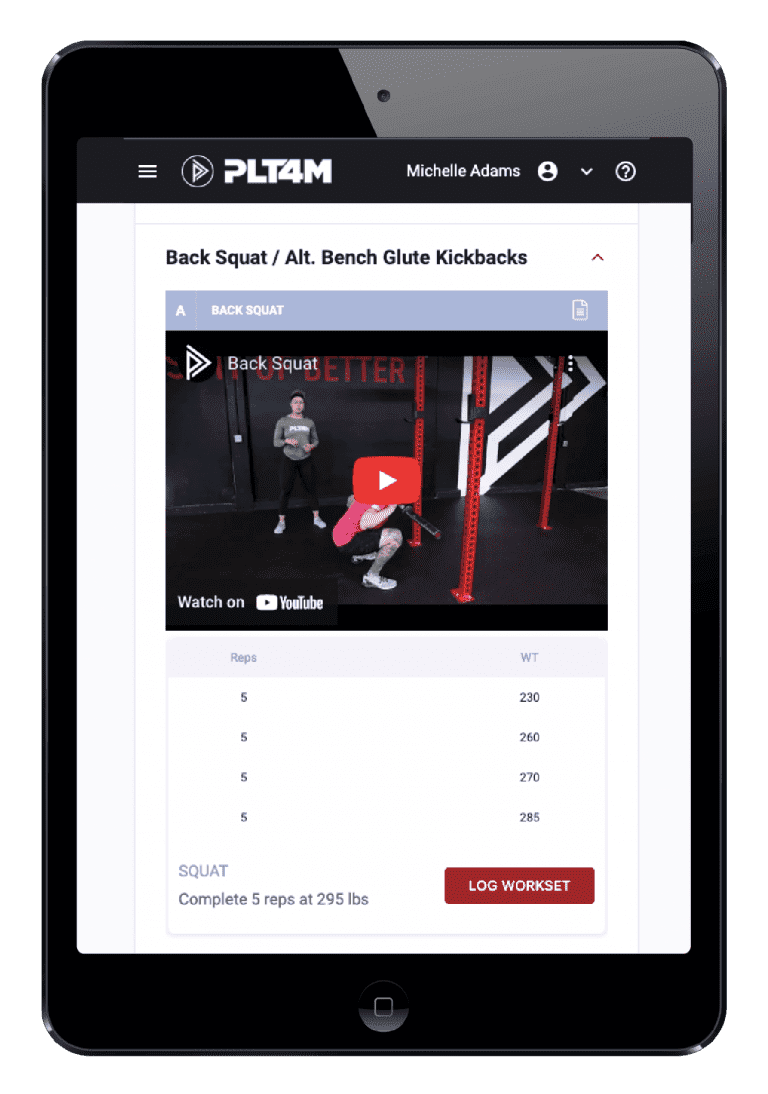
Step 2: When To Track Student Progress
Once you have determined what types of data you want to collect on student performance in the physical education classroom, you must decide when to measure these data points for individual students.
Historically, fitness testing in physical education has taken up an entire class period. Teachers set up different stations and run through the gambit of fitness testing. Typically, this is done at the beginning, (maybe) middle, and end of the semester.
But, there are drawbacks to this style of tracking student progress. For teachers, it takes up an entire lesson and means collecting an overwhelming amount of student data all at once. It also places a lot of pressure on students to perform at specific points of the semester. Finally, tracking student progress can and should be done throughout the entire semester with more regular feedback points.
Physical education teachers can layer in different types of assessments and check-ins directly into lessons to achieve a more regular system of tracking student progress. For example, exit tickets are a popular way to check in more regularly and track student progress.
If you choose to track student progress, you will want a student progress tracking system to help streamline and manage the process, which brings us to step 3: HOW.
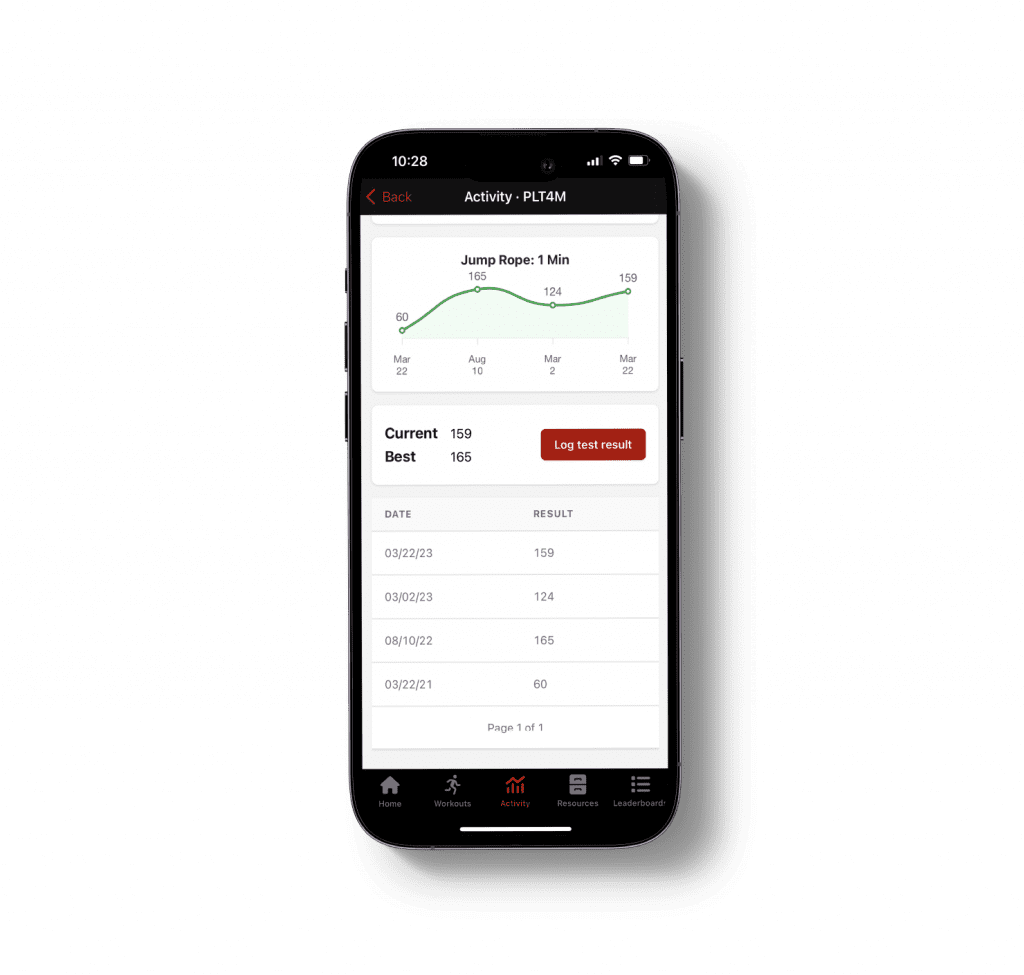
Step 3: How PE Teachers Go About Tracking Student Progress
Tracking student progress in physical education used to be through pen and paper. Physical education teachers logged different fitness metrics and results into a log book. And as technology in physical education became more popular, some teachers took these efforts to a spreadsheet. But this still means physical education teachers hold the keys to student progress monitoring.
With over 1,000 schools utilizing PLT4M as a curriculum and technology resource in physical education, tracking student progress has become a key feature within the platform.
Students can log data results directly to their personal accounts. In doing so, they can see their progress and fitness levels mapped and charted over time. This personalized information helps students be better motivated to set fitness goals and get more in tune with their physical fitness.
In addition to student benefits, teachers can get insights into both individual and group progress with a click of a button. This can help inform teaching and lesson plans while also giving necessary feedback to all key stakeholders, from students to administrators.
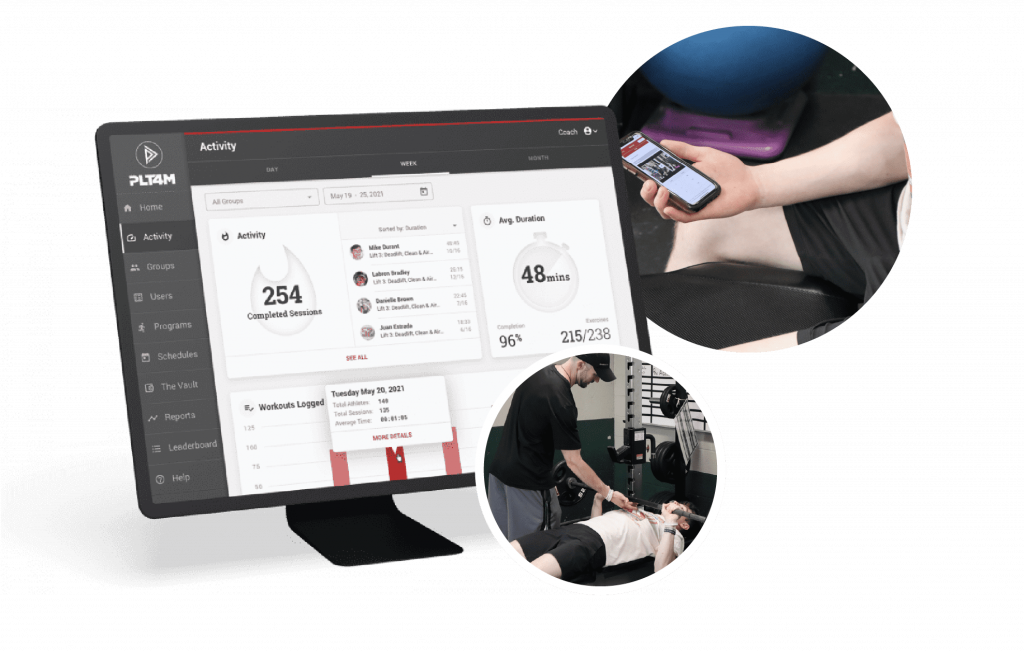
Key Takeaways on Tracking Student Progress in Physical Education
With multiple groups of students and large class sizes, collecting student data in physical education might seem like a daunting task. But tracking student progress can be manageable with the following key takeaways:
What and Why – Don’t just track to track! What are you measuring, and how will it help create a better picture of student performance in physical education?
When – Fitness testing and student progress tracking takes time and energy. Determine when it makes the most sense to collect different metrics and consider layering these into lessons throughout the semester.
How – Student progress tracking doesn’t mean you have to reinvent the wheel. Explore a student tracking system like PLT4M to streamline and manage your student data.
